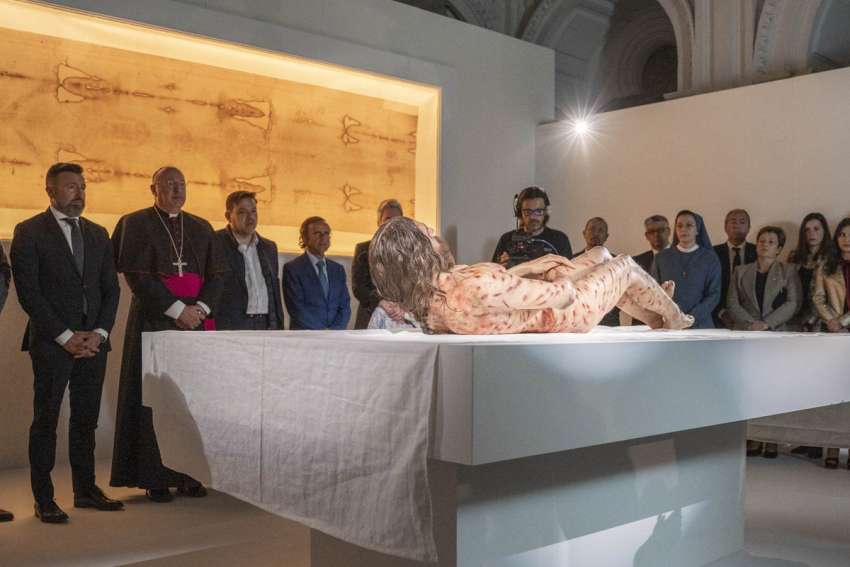While 17th- and 18th-century altarpieces were important tools used "to explain to people who did not know how to read" about Jesus' passion, Blanco said the "Mystery Man" exhibition, now on its second and last stop in southern Spain, helps people understand "Jesus' history from an archaeological point of view."
Blanco curates the "Mystery Man" exhibition, which was inaugurated in October at the Cathedral of Salamanca. The traveling exhibition is now on its second stop at the Guadix Cathedral, located in the southern Spanish province of Granada.
The exhibition will conclude in June and will continue its tour across Europe, beginning in Italy.
There is a need today for "something visual and with emotional and artistic impact, because art elevates," Blanco told OSV News April 6.
Like Leonardo da Vinci or Michaelangelo used the Gospels to inspire their art, "we are doing the same with access to archaeological findings and other elements that allow us to tell the story of Jesus of Nazareth," he added.
The image is a life-sized model of the man featured in the Shroud of Turin, the famed 14-foot-by-4-foot burial cloth that features a photonegative image of a man bearing the signs of wounds that correspond to the Gospel accounts of the torture Jesus endured in his passion and death. The wounds -- including those of flagellation and crucifixion -- match the description of the shroud and the position of the model is how Jesus' body would have looked while being inside the shroud.
Since it first surfaced in the mid-14th century, the Catholic Church has never officially ruled on the Shroud of Turin's authenticity.
Scientists have debated its authenticity for decades and studies have led to conflicting results, including a 1988 carbon dating test that dated the cloth to the 12th century, leading many to conclude that the shroud is a medieval forgery.
However, other scientists have challenged that claim by noting that the methodology of the testing was erroneous and that the sample used in the carbon dating process was a piece used to mend the cloth in the Middle Ages.
Blanco told OSV News that he was unsure how people would react to the exhibition when it first premiered in Salamanca and thought it would be difficult for visitors who were "accustomed to imagery more rooted in art."
However, the reaction "was much better than I expected," he said, adding that the thousands of visitors were impacted by the image not because it was "someone's free interpretation, but what is reflected in the Shroud (of Turin) which gives much more meaning to the story."
"From the first minute, the face (of the Jesus model) was tremendously well-accepted, and the impact was powerful for people because, for the first time, a hyper-realistic figure of Jesus of Nazareth had been created."
Blanco told OSV News that the fact the man in the Shroud of Turin bears the same wounds that Jesus bore as recounted in the Gospels and recorded history was more than just a mere coincidence.
"Many times, when some people ask me, 'How can you say that this is Jesus?,' I respond by asking, 'Give me proof that it isn't?'" he said.
He also noted evidence that the blood stains on the shroud match with the bloodstains on the famed Sudarium of Oviedo, the cloth believed to have been wrapped around Jesus' head that is currently housed in northern Spain.
Scientific debates aside, for Blanco, the "Mystery Man" is much more than just a true-to-life representation of the shroud's image, but a work of art that, like other depictions of Christ's passion and death, evokes feelings of empathy, compassion and love.
Why do people find beauty in the accurate representation of a man, bruised, bloodied and dead? It's because "it isn't a death, it's a sacrifice," Blanco said. "It is Jesus' sacrifice recounted by (Jesus) himself, recounted through his flesh and his blood."
"We have seen it in films, in processions, in paintings and, all of a sudden, you find yourself in front of this live reflection of this body," he added. "It doesn't cause an unpleasant feeling; it causes an inevitable feeling of compassion."


